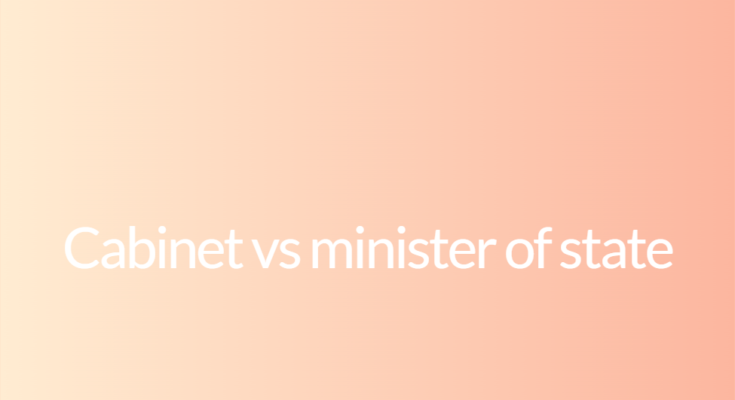Introduction:
In a government structure, the cabinet and the ministers of state play crucial roles in the decision-making process and the implementation of policies. While both are important, there are significant differences between the cabinet and ministers of state. In this article, we will explore the distinctions between the two in terms of their roles, responsibilities, and level of authority.
Difference between Cabinet and Ministers of State:
1. Composition:
The cabinet is comprised of senior ministers who hold important portfolios and are usually experienced politicians or experts in their respective fields. On the other hand, ministers of state are junior to the cabinet ministers and assist them in their duties. They are often responsible for specific departments or sectors.
2. Responsibilities:
Cabinet ministers are entrusted with major departments like finance, defense, foreign affairs, etc. They have significant decision-making powers and are responsible for creating and implementing government policies. Ministers of state, on the other hand, hold less prominent portfolios and are responsible for assisting the cabinet ministers in their work. They often handle specific areas that fall under the jurisdiction of the respective cabinet minister.
3. Authority:
Cabinet ministers have greater authority and power as compared to ministers of state. They are involved in high-level decision-making processes and have the final say in policy matters. Ministers of state, on the other hand, have limited authority and their powers are delegated to them by the cabinet minister they are assisting. They are responsible for executing tasks as assigned by the cabinet minister.
4. Importance:
Cabinet ministers are considered to be crucial members of the government and are part of the inner circle of the executive branch. Their decisions and actions have far-reaching implications and directly impact the functioning of the government. Ministers of state, although less influential, still hold important positions in the government and contribute to the overall functioning of the cabinet.
5. Cabinet Meetings:
Cabinet ministers regularly convene for cabinet meetings to discuss important national issues, policy matters, and make collective decisions for the betterment of the country. These meetings are chaired by the Prime Minister or President, depending on the country’s political system. Ministers of state are not part of these cabinet meetings unless specifically invited by the cabinet minister they are assisting.
Conclusion:
In conclusion, both the cabinet and ministers of state hold significant positions in the government structure. The cabinet consists of senior ministers with decision-making powers and responsibilities for major departments. Ministers of state, on the other hand, assist the cabinet ministers in their work and handle specific areas under their jurisdiction. While cabinet ministers have greater authority and influence, ministers of state contribute to the overall functioning of the government. Understanding the distinctions between the two is essential to comprehend the dynamics of the government decision-making process.



